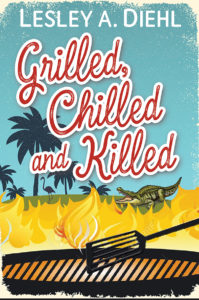My new muse: Facts, folklore and myths
This past winter, I decided to retire my Florida literary muse and replace the muse with another . After some consideration on my part and the input from the readers of this blog, I chose the coyote.
I hear them sing across the field from our house when the train thunders through late at night. The music is beautiful and haunting. Information on the coyote says they howl only when alone, but I also hear the pack yipping at the sound of the train. Because there is almost nowhere in North (and now Central) America where coyotes do not live, they can be heard in town, in the suburbs and in cities. I have heard them in the river valley here in Upstate New York.
Coyotes have a mixed reputation. While they are a part of Native American legend especially among the Southwestern tribes and were a symbol of military might, their image among European settlers was negative and has not improved much today. I like the view of the coyote in some tribal legend as a clever trickster, using deception and humor to rebel against social conventions. I think that’s exactly the kind of muse I need to inspire my writing set in rural Florida. My protagonists are snowbirds who have adopted rural Florida as their home, but they are still outsiders who must use wit and intelligence as well as humor to deal with their new communities and track down those who kill. The spread of coyotes’ territories indicates they, too, have used their intelligence to adapt to living in places they’ve had to adopt as homes.
I’ve been doing some research on coyotes to learn more about my muse. I thought I’d share it with you here:
The coyote is native to North America, and is smaller than its close relative the gray wolf and slightly smaller than its other close relatives, the eastern wolf and the red wolf. Coyotes range in weight from 15 to 40 pounds. Coyotes live in family units or in loosely knit packs of unrelated individuals. Both parents are responsible for raising the pups.Its diet consists mainly of meat, small mammals, amphibians and reptiles, but a coyot may eat vegetables and fruits. It main enemy is humans, but it is so adaptable that its territory has expanded to include rural, suburban and urban areas. It sometimes will breed with gray, eastern, or red wolves, producing hybrids colloquially called “coywolves.” In northeastern United States and eastern Canada, a larger species of coyote (although still smaller than the three types of wolves), called the eastern coyote is the result of recent mating of the various types of wolves and coyotes. Most recent studies show that most wolves contain some level of coyote DNA. Contrary to popular myth coyotes do not mate with dogs because raising of the young is done by both parents and dogs are unlikely to remain with a coyote mate making raising of the pups for a lone parent difficult. While the public image of wolves has improved, attitudes toward coyotes have remained largely negative. When I lived in South Dakota, I remember a scrawny coyote in a cage being displayed in a parade. People booed and hissed at the poor unfortunate animal.
I’ve been surprised to see rather large coyotes when driving from Massachusetts to New York State. I think these may have been the so-called “eastern coyote” which probably originated in the aftermath of the extermination of the gray and eastern wolves in the northeast. This allowed coyotes to colonize former wolf ranges and mix with remnant wolf populations. This hybrid is smaller than either the gray or eastern wolf, and holds smaller territories, but is larger and has more extensive home ranges than the typical western coyote.
When we lived in New Mexico, we saw many coyotes which were smaller than those we see in New York. I remember one sad specimen in the Bosque del Apache who was suffering from mange. Instead of the large fluffy tail, it was almost bare, as was the body.
I still have not decided on a name for my muse, and I do not know if the muse will be male or female, young and frisky or old and wise. I’m open to suggestions. What do you think?
For general information on the coyote, Wikipedia is a source, and for ongoing information about living alongside coyotes and other community issues, projectcoyote.org is an excellent source.
My blog tour for Dumpster Dying and Grilled, Chilled and Killed begins tomorrow. Stop by each blog top and enter to win a free book or for the opportunity to have me use your name as a character in one of my books.
Tour schedule:
May 15 – The Ninja Librarian – REVIEW – Book 1, CHARACTER GUEST POST
May 15 – My Journey Back –My Reading Journeys – REVIEW – Both Books, INTERVIEW*
May 16 – Queen of All She Reads – REVIEW – Both Books
May 16 – Dee-Scoveries – SPOTLIGHT
May 17 – Valerie’s Musings – REVIEW – Both Books, INTERVIEW
May 17 – Babs Book Bistro – SPOTLIGHT
May 18 – A Blue Million Books – GUEST POST
May 18 – Book Babble – REVIEW – Both Books
May 19 – Sleuth Cafe – SPOTLIGHT
May 19 – Bookworm Mom – GUEST POST
May 20 – Texas Book-aholic – REVIEW – Book 1
May 20 – 3 Partners in Shopping, Nana, Mommy, & Sissy, Too! – REVIEW – Both Books *
May 21 – Books,Dreams,Life – SPOTLIGHT
May 21 – Island Confidential – CHARACTER INTERVIEW
May 22 – Laura’s Interests – REVIEW – Both Books, CHARACTER GUEST POST
May 23 – FUONLYKNEW – REVIEW – Both Books*
May 24 – StoreyBook Reviews – REVIEW – Both Books
May 24 – T’s Stuff – REVIEW – Book 1
May 25 – Bibliophile Reviews – REVIEW – Both Books
May 25 – Celticlady’s Reviews – SPOTLIGHT
May 26 – Rainy Day Reviews – REVIEW – Both Books*
May 26 – Socrates’ Book Reviews – REVIEW Book 1
May 27 – Varietats2010 – REVIEW – Book 2
May 27 – Brooke Blogs – REVIEW Book 1, GUEST POST*
May 28 – Brooke Blogs – REVIEW Book 2*
May 28 – Cassidy’s Bookshelves – CHARACTER GUEST POST

